The Burrow

Most dogs love a good car trip. The sheer look of happiness on their faces as they lean out the window, tongues wagging in the wind, are full of joy. Sometimes, they don’t, but it’s necessary to take them in the car for a journey. The same applies to cats and other pet animals. Sometimes you need to take them for a drive in the car somewhere.
But taking a pet in the car isn’t completely straightforward. After all, cars are built to carry people, not cats and dogs.
As pet insurance experts, we wanted to understand more about how people transport their pets and keep them secure, so we surveyed more than 3,000 adults across Australia, Canada and the USA.
Here’s what we found.

In each country surveyed, roughly 80% said they take their pets in the car.
Of those, almost a third of Americans don’t secure their pet (31.2%), and around 30% of Canadian pet owners said the same. While Australians were the most likely to keep their pets secured, there was still 21.2% who didn’t keep their pets strapped in for the journey.
Additionally, 4.8% of Australians, 9.7% of Canadians and 8.2% of Americans say a passenger holds the pet in their lap, but aren’t kept secure.
Most pet owners who do bring their pet along use a collar to seat belt attachment to keep them secure (45.8% in Australia, 29.3% in Canada and 31.7% in the USA). Enclosed car crates were the third-most popular option for those who took their pets along for a ride (19.3% in Australia, 22.0% in Canada and 18.5% in America). As noted below, these are one of the safest options for transporting pets in the car.
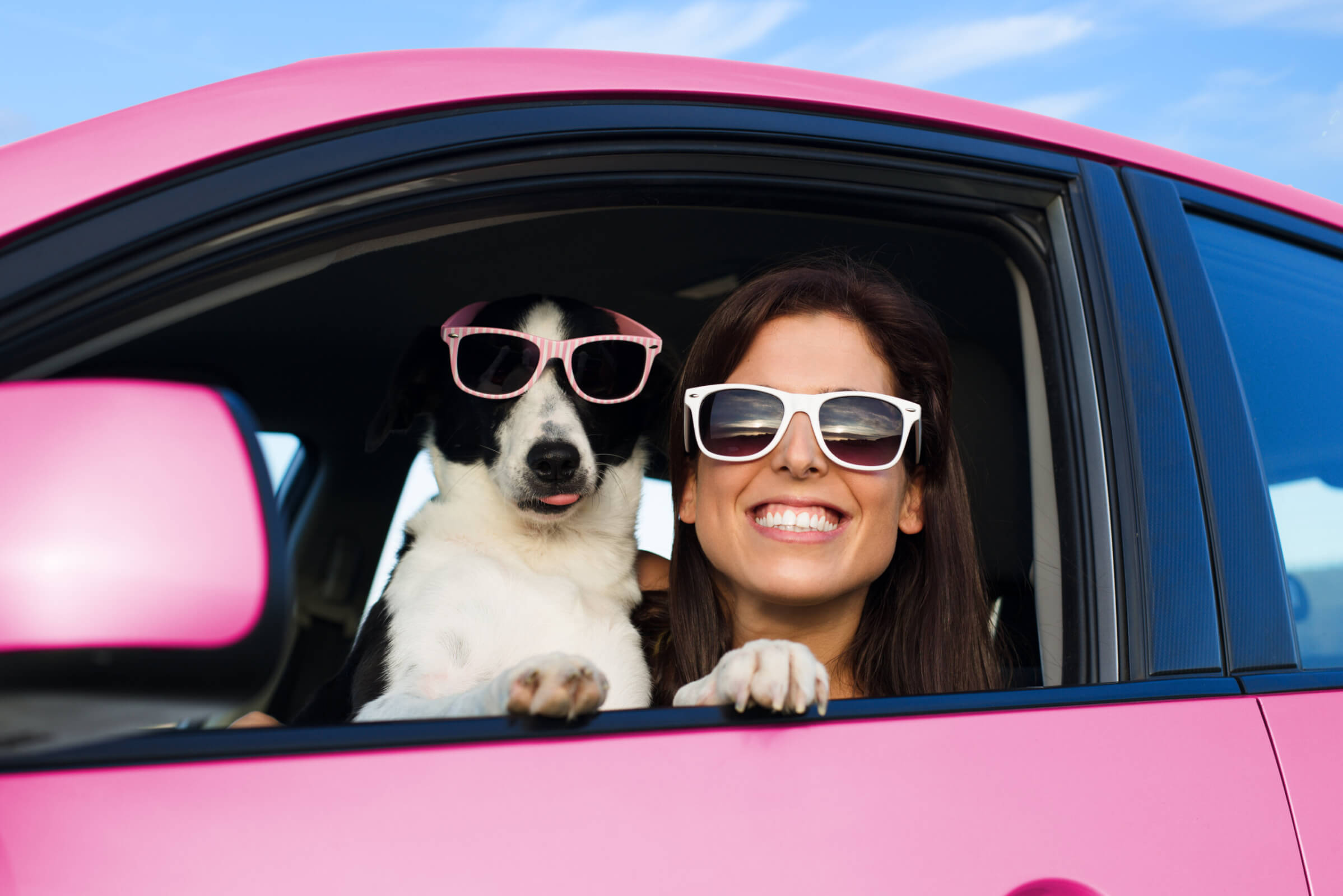
In each country surveyed, roughly 80% said they take their pets in the car.
There are a range of pet seatbelt attachments and harnesses available on the market, but some will not provide adequate protection from harm in case of an accident. In fact, in 2020 it was noted that many products had not been tested or were not tested adequately, according to Consumer Reports.1
The Center For Pet Safety, which has partnered with Subaru to conduct crash testing of pet harnesses,2 notes that extension tethers and collar to seatbelt attachments are unsafe and can lead to severe injuries. It is recommended to use a harness that goes around the pet’s body or a specialised pet car crate.3

When asked where their pets sit in the car, most Australians said they sit in the back seat in the middle (20.8%) or passenger side (20.5%). Most Canadians and Americans had the pet sit in their passenger seat (22.6% in Canada and 25.4% in the USA).
In a previous study we conducted, we found that the most comfortable place for a dog to sit in the car was the back seat on the passenger side, where they could view their owner as they drive the car. The front passenger seat was relatively comfortable for dogs, but not as much as the back seat.4
The infographic below shows the popularity of different seat positions for pets transported in the car for each country, as well as the different methods of securing the pets in the car.
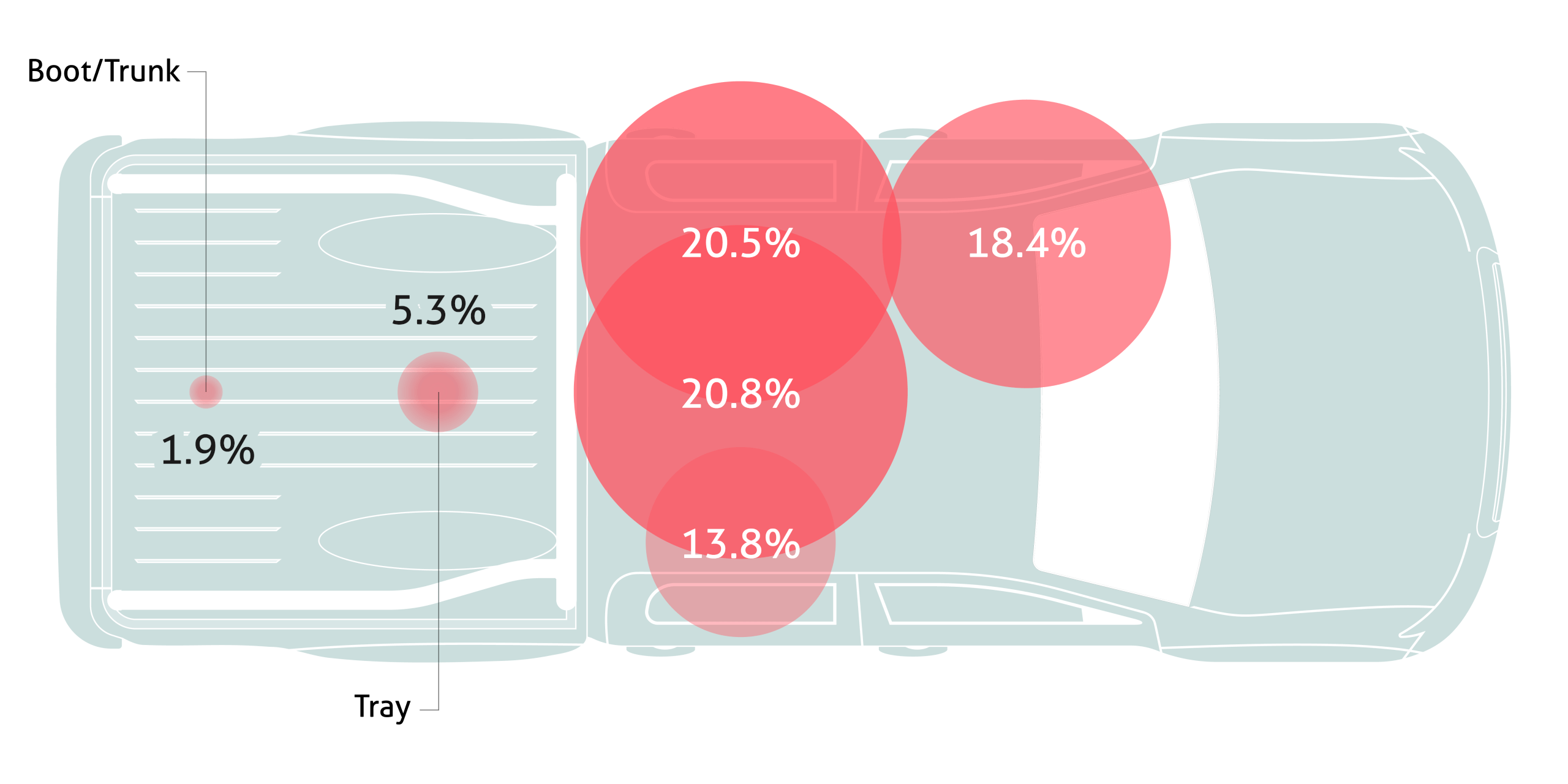
Location | Percent |
Collar to seat belt attachment | 45.8% |
Not secured at all | 21.2% |
Car crate (enclosed) | 19.3% |
Held by a passenger (not properly secured) | 4.8% |
Car hammock | 3.9% |
Car crate (open-top) | 3.3% |
Tied to the ute tray/back of the truck | 1.7% |
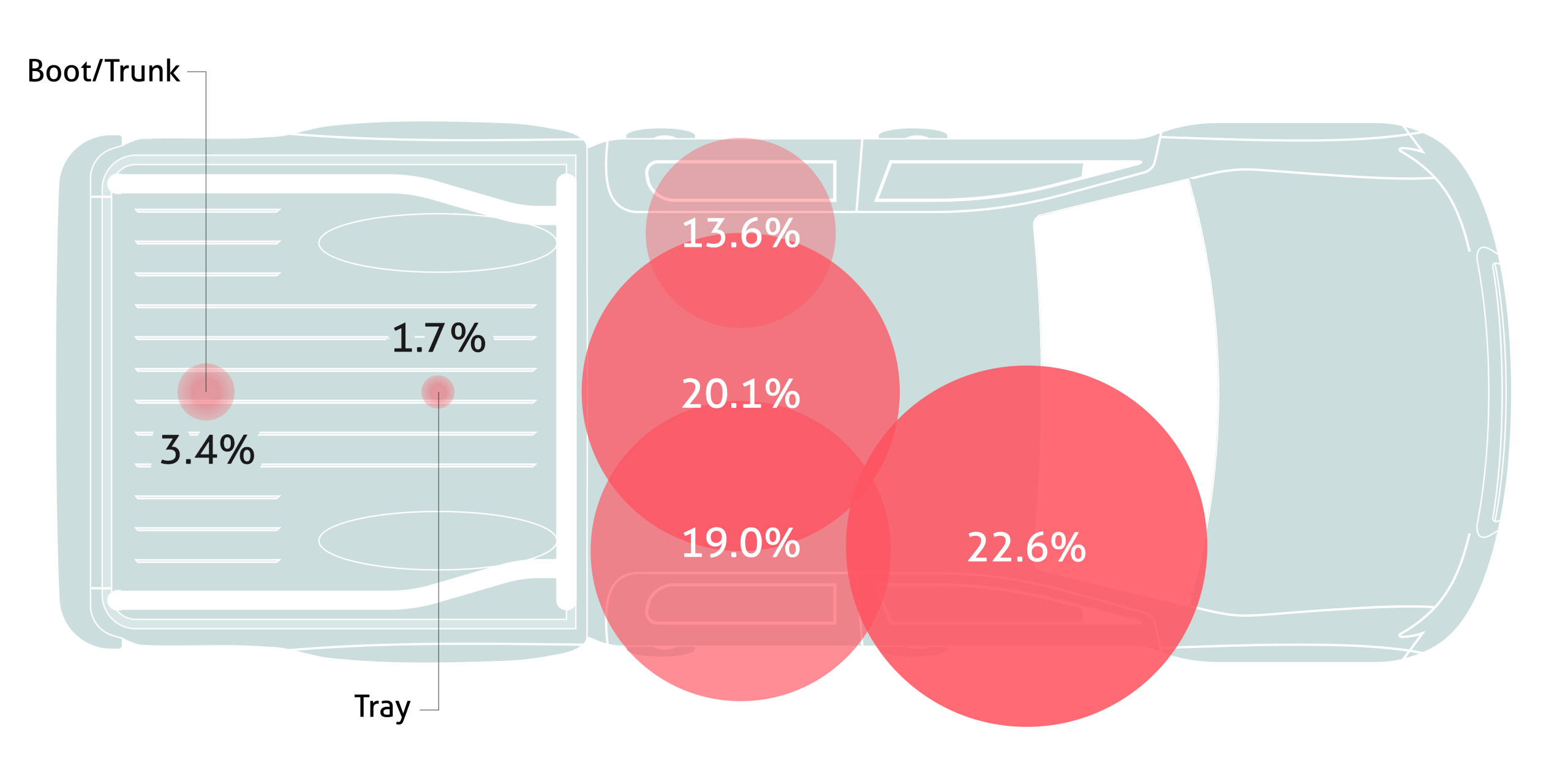
Location | Percent |
Not secured at all | 29.5% |
Collar to seat belt attachment | 29.3% |
Car crate (enclosed) | 22.0% |
Car crate (open-top) | 4.9% |
Car hammock | 3.7% |
Tied to the ute tray/back of the truck | 0.9% |
Held by a passenger (not properly secured) | 9.7% |
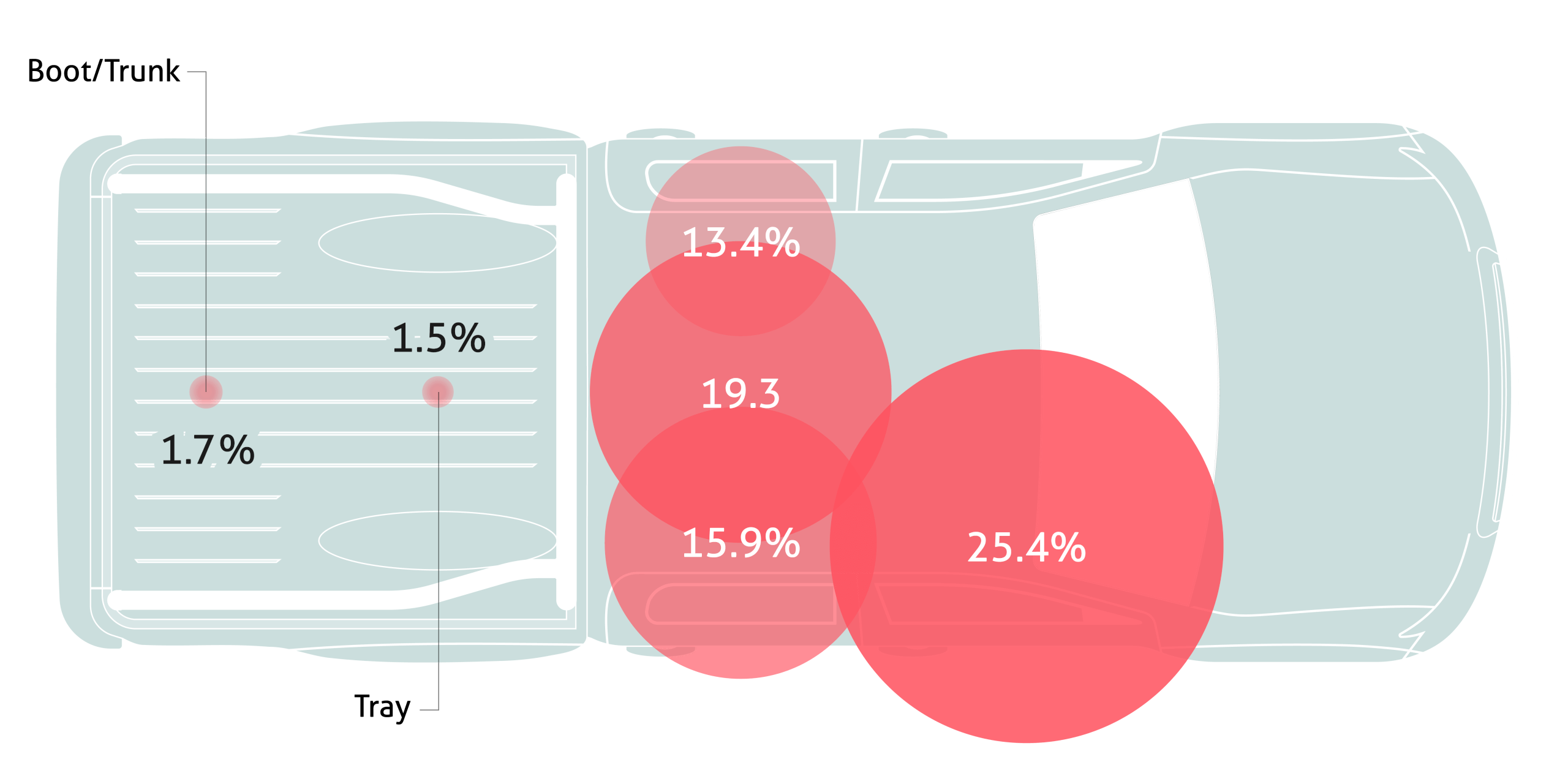
Location | Percent |
Not secured at all | 31.2% |
Collar to seat belt attachment | 31.7% |
Car crate (enclosed) | 18.5% |
Car crate (open-top) | 5.7% |
Car hammock | 3.6% |
Tied to the ute tray/back of the truck | 1.1% |
Held by a passenger (not properly secured) | 8.2% |

Each country has slightly different rules regarding pet restraints when transporting our canine and feline friends by car.
For example, Canada and Australia have national laws regarding pet transport safety,5,6 as well as local state-based requirements, but in the USA there is no national law. In fact, as of July 2021, only a handful of US states have legislation forbidding an unrestrained dog being driven inside a vehicle – a few others require dogs in the tray of a pick-up to be secured but not when they are inside the vehicle.7
In 2022, the RSPCA Queensland reported that up to 500 dogs are injured or killed every year in Australia from falling from a moving vehicle, and failing to secure your dog could lead to thousands of dollars in fines.8 Likewise in Canada, it is illegal, and drivers with unsecured pets could face multiple penalties such as an insecure load fine or careless driving fine.9

Cats were much more likely to never be transported in a car, with 46.1% of Australians, 43.8% of Canadians and 52.0% of Americans saying they don’t take their feline friends for a drive. In comparison, only 5.6% of Australians, 3.9% of Canadians and 9.8% of Americans refuse to take their dog in the car.
Cats were also much more likely than dogs to be secured for transport. Almost 70% of Australian cat owners, 59.8% of Canadian cat owners and 48.8% of American cat owners who took their feline friends for a drive had them in an enclosed car crate.
In Australia, only 4.5% of cats in cars were unsecured, compared to 22.8% of dogs. In Canada these numbers were 8.2% vs 37.2%, and in the States it was 12.8% vs 35.6%.
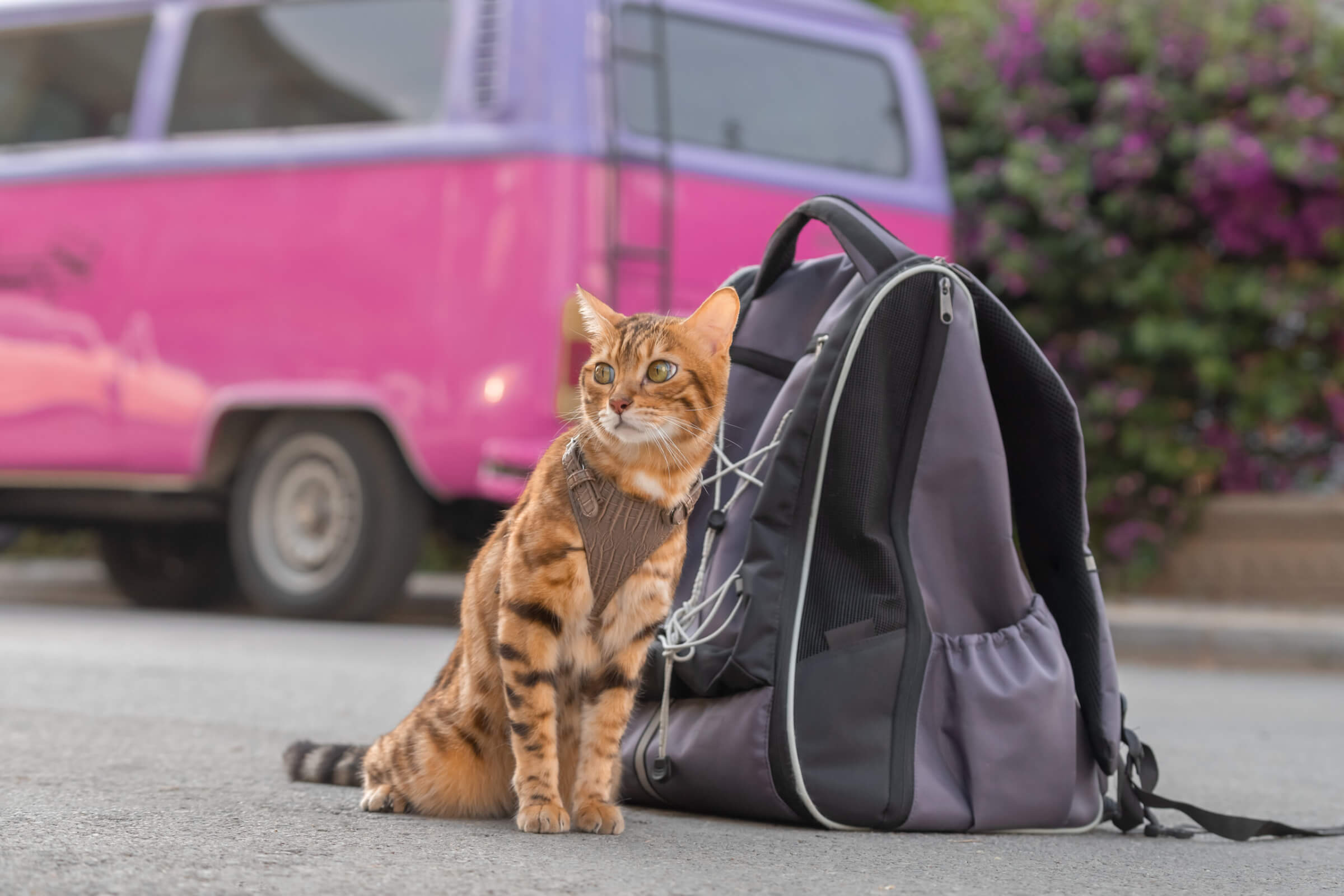
46.1% of Australians, 43.8% of Canadians and 52.0% of Americans say they don’t take their feline friends for a drive.

Pet insurance can help pay for vet bills if your cat or dog is injured in an accident, including car accidents. Compare the Market’s Executive General Manager of General Insurance, Adrian Taylor, notes that this applies whether the pet is secured or unsecured.
“Most pet insurance companies here in Australia will cover injuries from car accidents to insured pets, regardless of whether they are secured or unsecured in the car. It’s important to read through the Product Disclosure Statement (PDS) to check any exclusions,” Taylor explains.
“Despite this, it’s always best to make sure our pets are kept safe in the car so we don’t need to take them to the vet for severe injuries, and to keep ourselves safe, too.
“Importantly, keep them secure in accordance with your local state guidelines as you could risk infringements and fines if you don’t.”
Compare the Market commissioned PureProfile to survey 1,006 Australian, 1,012 Canadian 1,003 American adults in September 2023.
